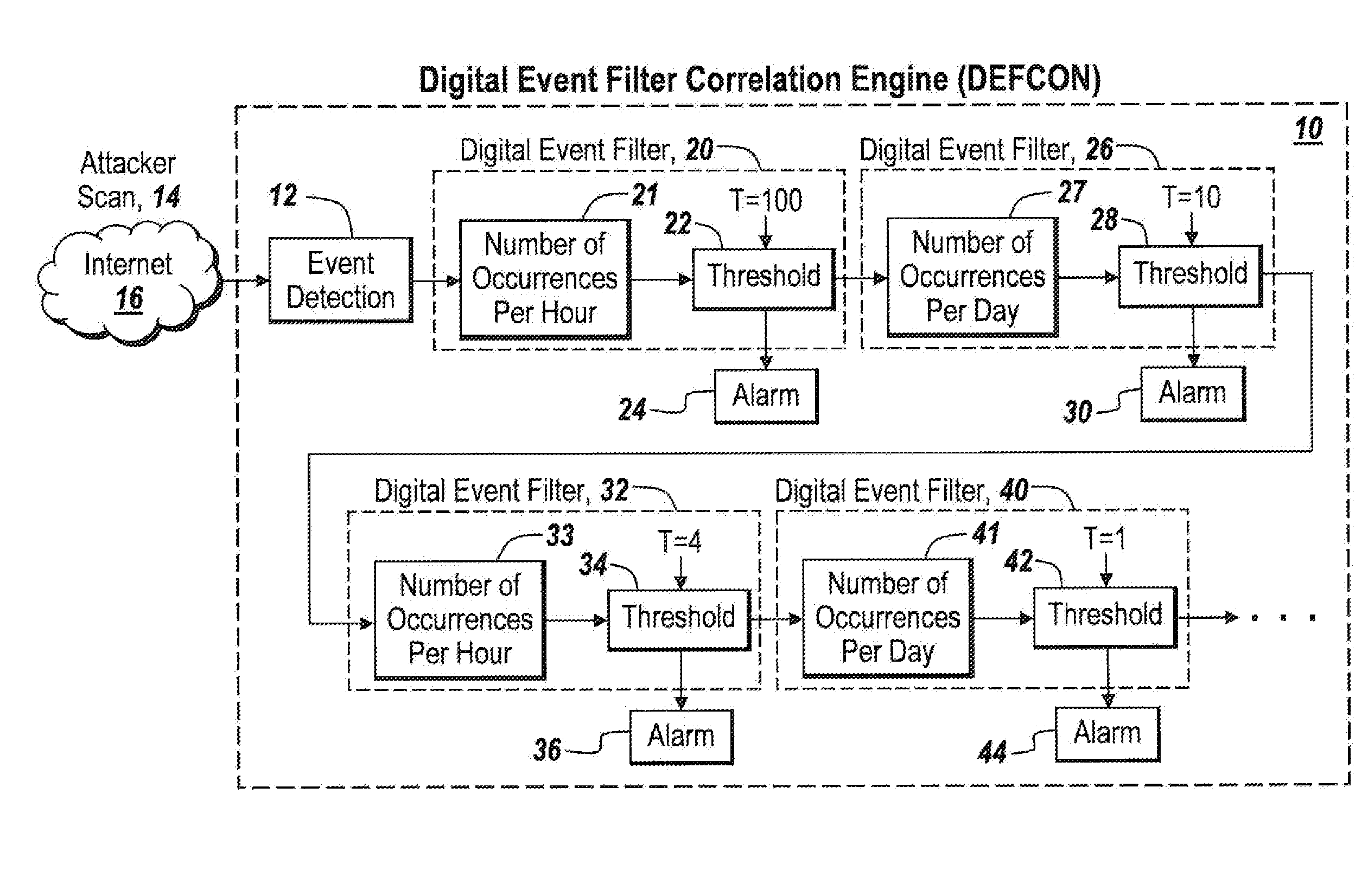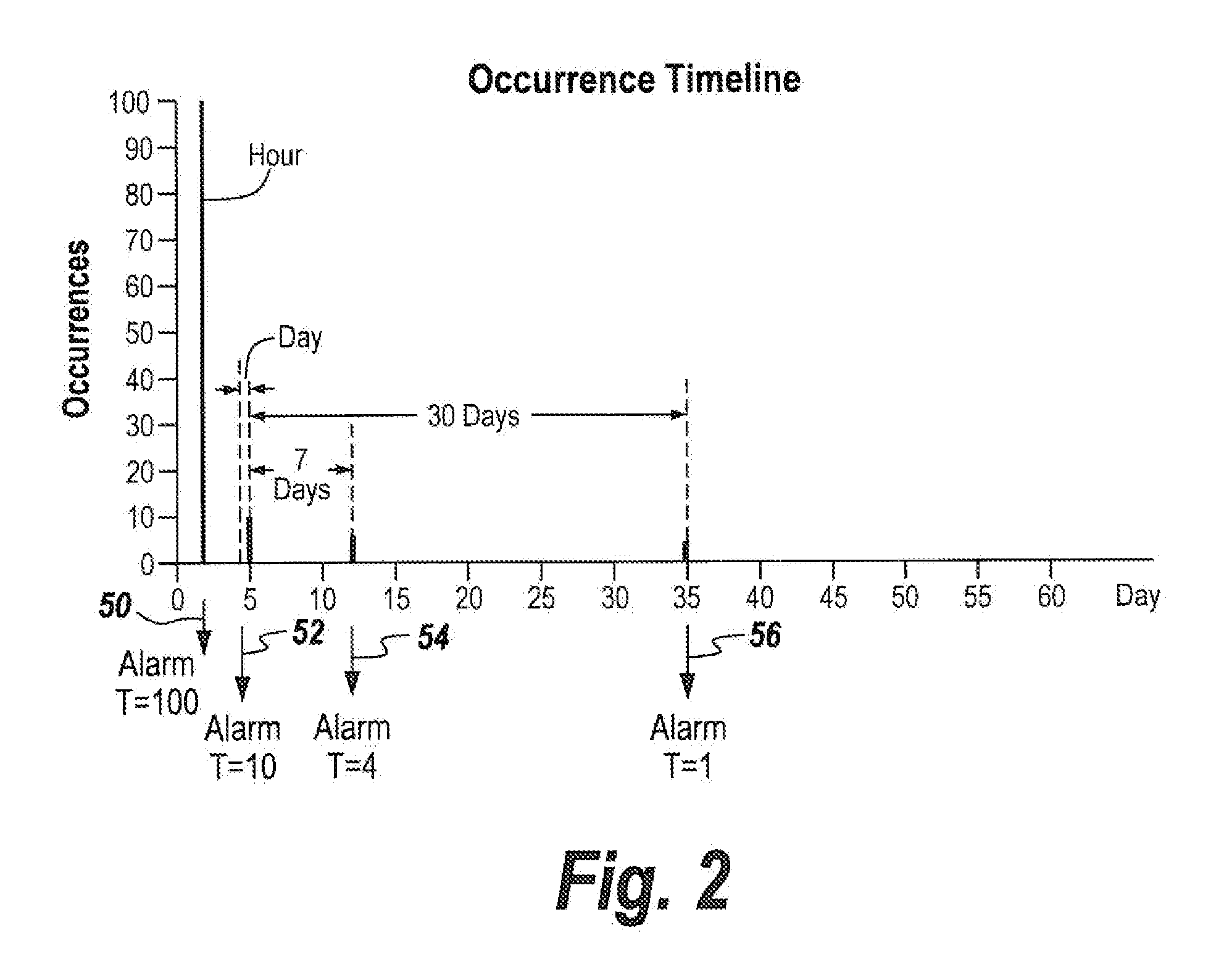Method and apparatus for detecting ssh login attacks
a login attack and login technology, applied in the field of network behavioral monitoring, can solve the problems of unnoticed by this type of detection system, difficult to solve, and inability to detect attacks in any sample period, etc., to achieve exceptionally robust login attack detection modality, reduce manual work, and reduce false alarms.
- Summary
- Abstract
- Description
- Claims
- Application Information
AI Technical Summary
Benefits of technology
Problems solved by technology
Method used
Image
Examples
Embodiment Construction
[0075]While the subject case is directed to stealthy login attack detection, the subject system is described generally, noting that the login attack detection is a subset of the capabilities of the DEFCON engine.
[0076]Referring now to FIG. 1, a Digital Event Correlation Engine, DEFCON, 10 is described which can detect sophisticated login attacks. The DEFCON engine incorporates an event detection sensor 12 in this case a login attack sensor which is designed to detect a particular type of attack generated by an attacker scan 14 and delivered over the internet 16.
[0077]For purposes of illustration only, a single type of event detector or sensor is first described. The event can be indicated by for instance the detection of a login attack, or for instance anomalous packet detection, unknown network flow detection, shellcode detection, and denial of service attack detection; and through the use of metrics including excessive shellcode Ngram matches to a TCP server that is under attack. ...
PUM
 Login to View More
Login to View More Abstract
Description
Claims
Application Information
 Login to View More
Login to View More - R&D
- Intellectual Property
- Life Sciences
- Materials
- Tech Scout
- Unparalleled Data Quality
- Higher Quality Content
- 60% Fewer Hallucinations
Browse by: Latest US Patents, China's latest patents, Technical Efficacy Thesaurus, Application Domain, Technology Topic, Popular Technical Reports.
© 2025 PatSnap. All rights reserved.Legal|Privacy policy|Modern Slavery Act Transparency Statement|Sitemap|About US| Contact US: help@patsnap.com



